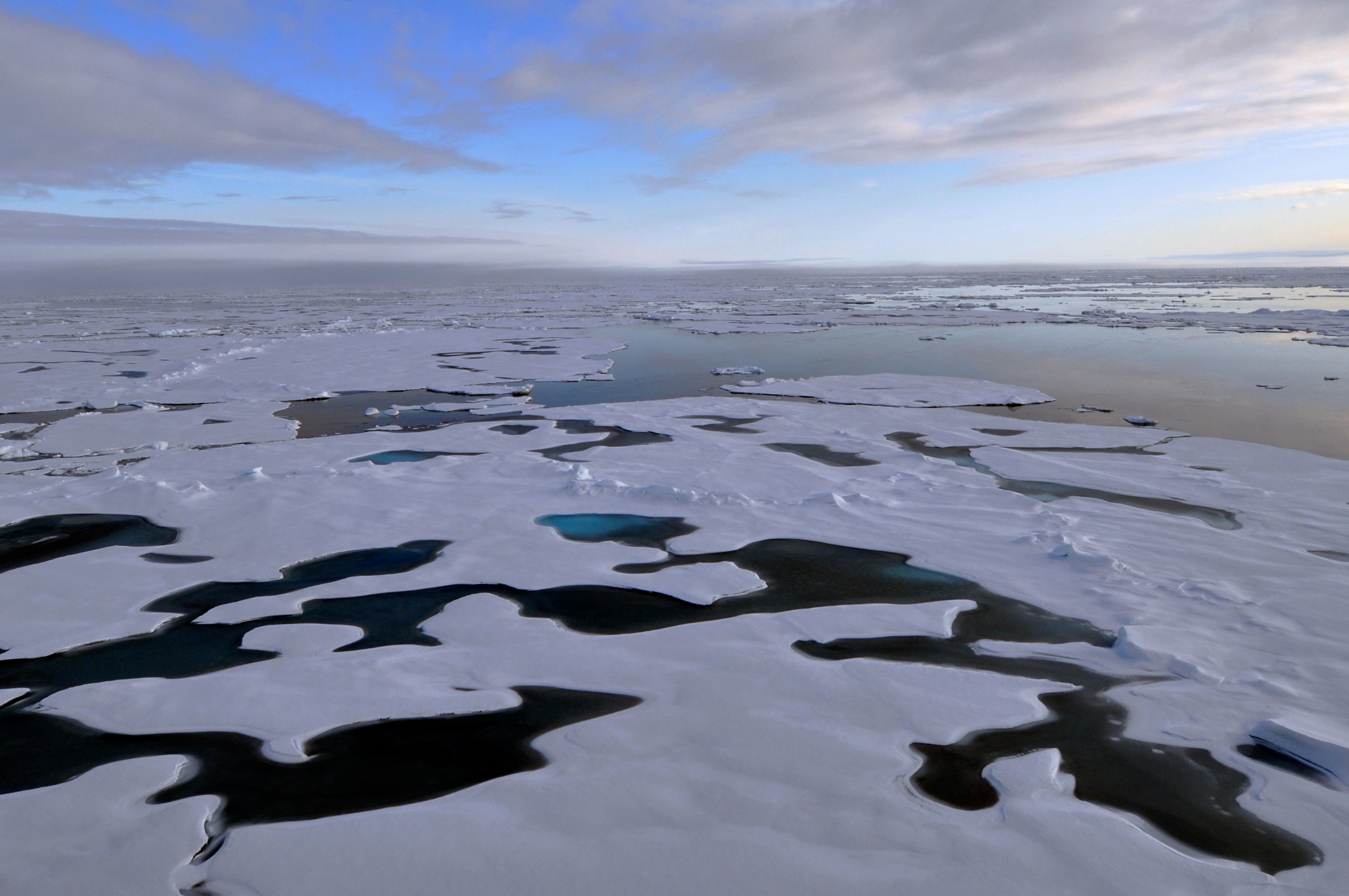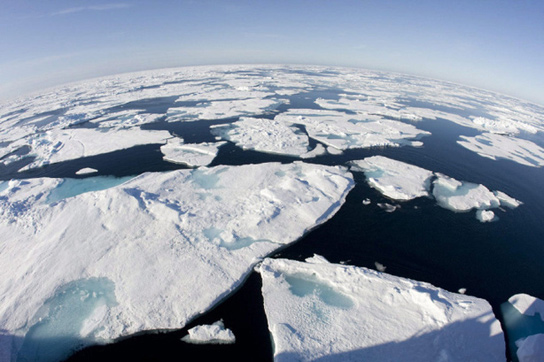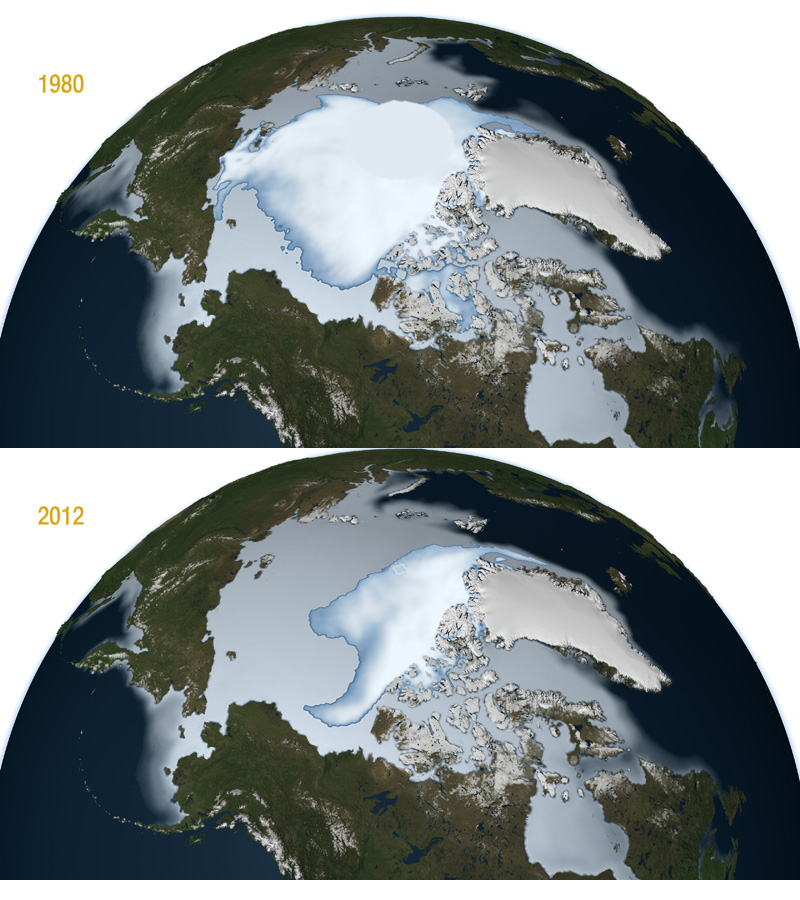Runaway Ice Loss in the Arctic

In 1978 we began employing satellite technology to monitor the planet and its weather systems, including, inter alia, polar ice trends. NASA have now accumulated enough data to make sense of the patterns of previous decades. The below satellite capture compares sea ice extent between 1980 and 2012.
To track these patterns in detail, climatologists delineate two types of sea ice: seasonal ice and multi-year ice. It is natural for some frozen layers to melt away in the summer as temperatures climb higher, and we call this ice seasonal ice. Multi-year ice is the thicker, two or more years-old ice, often but not always resting below the seasonal ice. The two varieties have different salinity levels, helping scientists distinguish between them.
Analysis of decadal sea ice concentrations in the Arctic reveals that multi-year ice reached its minimum (open-water) extent back in 2008, covering about 45% less surface compared with the late 1970s. The Arctic reclaimed some of this loss in the three years since, but overall is still much lower compared with our earliest records.
The latest study shows us not only that sea ice extent is shrinking, but sea ice area as well. Ice area involves only the regions of the Arctic covered completely by multi-year ice. The study found that “multi-year ice area is shrinking even faster than multi-year ice extent, by -17.2 percent per decade.”
The regression of sea ice extent and area are just two variables climate scientists rely on, however. Another is ice thickness, and this is deemed the most critical indicator of future trends. Naturally, multi-year ice constitutes the thickest regions of the ice column and its preservation is essential to maintaining overall ice concentrations and thus preventing global sea level rise. The data here paints no rosier a picture:
“The new research takes a closer look at how multi-year ice, ice that has made it through at least two summers, has diminished with each passing winter over the last three decades. Multi-year ice “extent” – which includes all areas of the Arctic Ocean where multi-year ice covers at least 15 percent of the ocean surface – is diminishing at a rate of -15.1 percent per decade,” the NASA study found.
While we are currently seeing some recovery in sea ice extent, this regrowth constitutes primarily seasonal ice, which will be gone by the time winter approaches. What we are seeing is that more and more of the ice cover is recently formed thin ice that will melt out quickly and be lost to the oceans. The denser, multi-year ice is also melting significantly faster than in decades past as surface temperatures continue to increase and as seasonal ice gives way earlier and earlier. It seems the Arctic is, in effect, being burned from both sides of the candle.
“The average thickness of the Arctic sea ice cover is declining because it is rapidly losing its thick component, the multi-year ice. At the same time, the surface temperature in the Arctic is going up, which results in a shorter ice-forming season,” Comiso said.”
In total, Arctic sea ice thickness in 2012 is less than a fifth of the volume from just thirty years ago. Worse, the six-year+ ice is almost gone entirely. If this positive loop continues, some projections estimate an ice-free Arctic by 2020 (worst-case), while even the best-case forecasts converge upon a mid-century mark.

The gravest danger presented by an iceless Arctic is of course rising sea levels. For point of comparison, sea level rise of just five meters is enough to submerse major cities like New York, London and Mumbai. The Antarctic ice sheet, if melted away, would raise sea level by 61.1 meters. The only way to curtail runaway sea ice retreat is to tamp down man-made greenhouse gas emissions. The longer we temporize in the halls of Congress and their overseas equivalent, the more our polar regions will bear witness to our lack of progress.
External link: NASA Finds Thickest Parts of Arctic Ice Cap Melting Faster
Feature image via nsidc.org



Comments